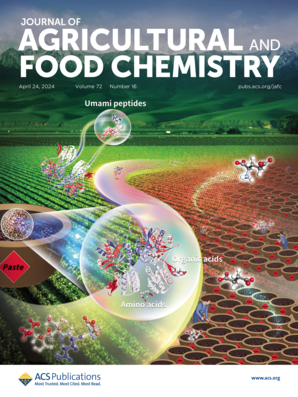Detection of Heavy Metal Copper Stress in Apple Rootstocks Using Surface-Enhanced Raman Spectroscopy
IF 5.7
1区 农林科学
Q1 AGRICULTURE, MULTIDISCIPLINARY
引用次数: 0
Abstract
Excessive use of copper (Cu) chemicals has led to soil contamination. This study utilized surface-enhanced Raman spectroscopy (SERS) to investigate the effects of 10 commonly encountered concentrations of Cu stress in orchards on apple rootstocks. Spectral preprocessing methods were employed to eliminate baseline drift and fluorescence background interference from the Raman spectra, while data augmentation techniques were incorporated to develop a one-dimensional stacked autoencoder convolutional neural network (1D-SAE-CNN) for classifying Cu stress levels, resulting in evaluation indices greater than 0.9. Scanning electron microscopy with energy dispersive spectroscopy (SEM–EDS) quantified Cu distribution in root, stem, and leaf tissues, while micro-Raman imaging visualized lignin, cellulose, and pigments under Cu stress. The results indicate that SERS combined with a deep learning model enables rapid and accurate differentiation of Cu stress levels in apple rootstocks in orchards, while SEM–EDS and micro-Raman imaging techniques reveal the migration effect of Cu2+ within apple rootstock tissues and the ″low concentration promotion, high concentration inhibition″ effect of Cu on apple rootstock growth. Therefore, this approach showcases rapid and accurate detection of heavy metal Cu stress in apple rootstock tissues and has great potential for analyzing various types of heavy metal pollution in agricultural orchard ecosystems.

利用表面增强拉曼光谱检测苹果根茎中的重金属铜应力
过量使用含铜化学品已导致土壤污染。本研究利用表面增强拉曼光谱(SERS)研究了果园中10种常见Cu胁迫浓度对苹果砧木的影响。采用光谱预处理方法消除拉曼光谱中的基线漂移和荧光背景干扰,并结合数据增强技术建立一维堆叠自编码器卷积神经网络(1D-SAE-CNN)对Cu应力水平进行分类,评价指标大于0.9。扫描电子显微镜与能量色散光谱(SEM-EDS)量化了Cu在根、茎和叶组织中的分布,微拉曼成像显示了Cu胁迫下木质素、纤维素和色素的分布。结果表明,SERS结合深度学习模型可以快速准确地区分果园苹果砧木中的Cu胁迫水平,SEM-EDS和微拉曼成像技术揭示了Cu2+在苹果砧木组织中的迁移效应以及″低浓度促进、高浓度抑制″的Cu对苹果砧木生长的影响。因此,该方法可以快速准确地检测苹果砧木组织重金属Cu胁迫,在分析果园农业生态系统中各种类型重金属污染方面具有很大的潜力。
本文章由计算机程序翻译,如有差异,请以英文原文为准。
求助全文
约1分钟内获得全文
求助全文
来源期刊
CiteScore
9.90
自引率
8.20%
发文量
1375
审稿时长
2.3 months
期刊介绍:
The Journal of Agricultural and Food Chemistry publishes high-quality, cutting edge original research representing complete studies and research advances dealing with the chemistry and biochemistry of agriculture and food. The Journal also encourages papers with chemistry and/or biochemistry as a major component combined with biological/sensory/nutritional/toxicological evaluation related to agriculture and/or food.

 求助内容:
求助内容: 应助结果提醒方式:
应助结果提醒方式:


